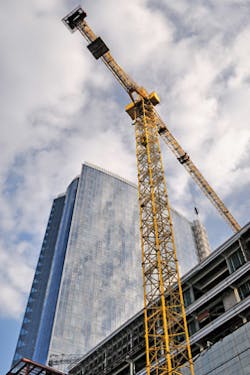Contractors Expected to Benefit from Increased Stimulus Work
In mid-February, a panel of construction contractors, equipment makers, and economists participated in an industry conference call to discuss how the government stimulus package has affected the construction industry over the past year as well as unveil their predictions for its second-year impact. Based on new analysis of federal data released recently by the Associated General Contractors of America (AGC), Arlington, Va., the group agreed that stimulus-funded infrastructure projects are saving and creating more direct construction jobs than initially estimated. In fact, AGC expects more contractors to perform stimulus-funded work this year as activity begins on many of the non-transportation-type projects funded in the initial package.
Ken Simonson, the association's chief economist, noted that new federal reports show the $20.6 billion worth of stimulus highway projects initiated over the past 12 months have saved or created nearly 280,000 direct construction jobs, amounting to 15,000 jobs per billion dollars invested, which is well above pre-stimulus estimates. He added that heavy and civil engineering construction employment was stable in January, even as total construction employment declined by another 75,000. Meanwhile, highway and road construction was one of the only areas to see an increase in spending last year.
Despite these bright spots, Simonson cautioned that overall declines in construction activity will likely continue. In the 12 months since the stimulus was enacted, Simonson characterized conditions in the construction industry as going from bad to worse. “Construction spending has declined by $100 billion, prompting nearly one million layoffs,” he said. “Today, almost one in four construction workers is unemployed, while many once-thriving firms are wondering if 2010 will be their last year in business.”
However, without the stimulus, Simonson maintains things would be even more dire. “The stimulus is saving construction jobs, it is driving demand for new equipment, and it is delivering better and more efficient infrastructure for our economy,” he said. “The stimulus will keep a bad situation from deteriorating further. That may not make for great headlines, but it is welcome news for construction workers anxious to continue receiving paychecks.”
This outlook begs the question, if the stimulus was such a success, then why is the construction industry suffering from Depression-era unemployment levels? According to Simonson, the reality is that overall declines in construction demand overwhelmed the benefits of the stimulus. “While the stimulus made $135 billion available for construction, those funds were spread out over several years,” said Simonson, who added that questions about “Buy American” provisions also slowed the distribution of non-transportation stimulus construction funds. “As a result, the benefits of the stimulus in 2009 largely went to road contractors, who make up roughly 5% of the construction industry. Meanwhile, the overall industry was hit with a 10% decline in spending as construction investments fell to a six-year low of $903 billion.”
According to Simonson, as well as several panelists on the call, the good news is that the delays in 2009 mean significantly more stimulus-funded opportunities will be available to contractors this year. “We expect to see many more stimulus-funded projects come online, especially for building contractors,” said Simonson. “This work will provide a much-needed lifeline for contractors, allowing them to retain many of their workers.”
